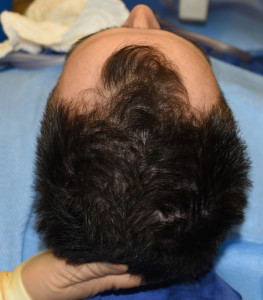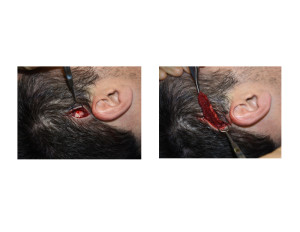Reduction of an undesired temporal convexity is becoming increasingly requested as it becomes aware that a procedure exists to do it. For a head that is too wide or convex above the ears, a technique has been developed to help narrow it. While such a temporal convexity is often perceived as being due to bone, the anatomy of the area indicates that the posterior belly of the temporalis muscle makes the greater contribution.
Resection of the posterior temporalis muscle can make a dramatic change in the shape of the side of the head. It can alter a convexity to a straight line as the thickness of the muscle is greater than one would think. In men the posterior belly of the temporalis muscle can be 7mm or more in thickness. Reduction of both sides of the head can thus result in a total width change of the head of up to 1.5 cms. Interestingly loss of the posterior temporalis muscle does not result in any loss of mouth opening.


Dr. Barry Eppley
Indianapolis, Indiana



